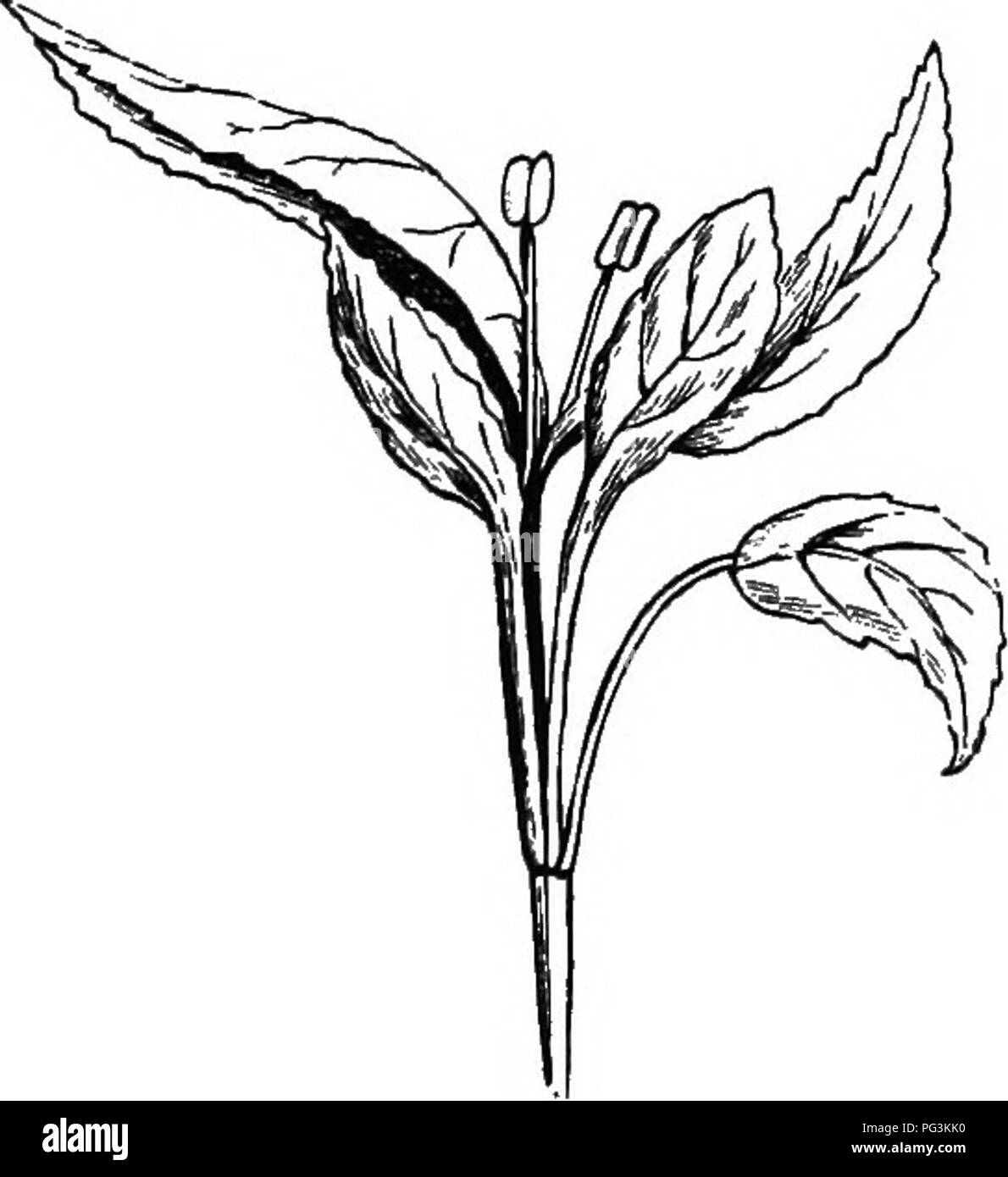. The origin of floral structures : through insect and other agencies. Plants; Flowers; Flowers. by, or at least is homologous with, the petiolar portion of the calycine leaves (Fig. 27). Phyllomes, however, are after all but modified portions of caulomes, and petioles are still less de- partures than are blades from the nature of an axis; so that while in some cases one is inclined to regard the tube as more strictly axial, in others it seem to be more homologous with a sort of fasciation of petioles. We shall see directly that the receptacnlar tube of Prunus contains the basal portions of th

Image details
Contributor:
Central Historic Books / Alamy Stock PhotoImage ID:
PG3KK0File size:
7.2 MB (173.9 KB Compressed download)Releases:
Model - no | Property - noDo I need a release?Dimensions:
1513 x 1652 px | 25.6 x 28 cm | 10.1 x 11 inches | 150dpiMore information:
This image is a public domain image, which means either that copyright has expired in the image or the copyright holder has waived their copyright. Alamy charges you a fee for access to the high resolution copy of the image.
This image could have imperfections as it’s either historical or reportage.
. The origin of floral structures : through insect and other agencies. Plants; Flowers; Flowers. by, or at least is homologous with, the petiolar portion of the calycine leaves (Fig. 27). Phyllomes, however, are after all but modified portions of caulomes, and petioles are still less de- partures than are blades from the nature of an axis; so that while in some cases one is inclined to regard the tube as more strictly axial, in others it seem to be more homologous with a sort of fasciation of petioles. We shall see directly that the receptacnlar tube of Prunus contains the basal portions of the cords proper to the calyx and corolla, so that we might regard the latter as, on the one hand, axial cords preparatory to forming the perianth; or, on the other, perianthial cords not yet differentiated into petioles. Similarly, in the case of monoootyledonous flowers, as the Daffodil, since petioles are less dif- Flg. 26.—Pear *Uh hypcrtropbied and sub-fasciate petioles.. Fig. 27.-<~Fiictasta with follaceons eepals and petals (alter Masters).. Please note that these images are extracted from scanned page images that may have been digitally enhanced for readability - coloration and appearance of these illustrations may not perfectly resemble the original work.. Henslow, George, 1835-1925. New York : Appleton